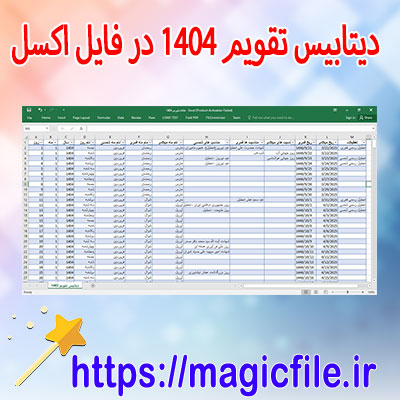INTRODUCTION TO EXCEL FOR DISPLAYING GREGORIAN EVENTS
Excel, a powerful spreadsheet tool, provides numerous functionalities for organizing, analyzing, and displaying data. One of its fascinating applications is tracking and displaying Gregorian events. Whether it's birthdays, anniversaries, or holidays, Excel can help you visualize these occasions effectively.
CREATING A DATABASE OF EVENTS
To begin, first, create a list of your events. Open a new Excel worksheet and label the columns accordingly. For instance, you might have columns such as "Event Name," "Date," and "Description." Input your data meticulously.
- Event Name: This is where you type the name of the occasion.
- Date: Enter the corresponding date in a recognizable format, such as MM/DD/YYYY.
- Description: A brief note about the event can be handy.
USING FORMULAS FOR DYNAMIC DISPLAY
Excel allows you to use formulas to display events dynamically. For instance, you can use the `TODAY()` function to compare today's date with your event dates.
- Use conditional formatting to highlight events approaching within a week.
- A formula like `=IF(A2=TODAY(),"Event Today!", "")` can create alerts for current events.
CREATING VISUAL REPRESENTATIONS
To enhance the display of your events, consider using graphs or charts. Excel provides options like pie charts or bar graphs to visualize the frequency of events.
- Select your data range and navigate to the "Insert" tab.
- Choose the chart type that best represents your data.
FINALIZING YOUR SPREADSHEET
Finally, don’t forget to format your spreadsheet for clarity. Use borders, shading, and bold text to make important dates stand out.
- Additionally, you can filter your data to focus on specific months or types of events.
CONCLUSION
In conclusion, Excel is an invaluable tool for showcasing Gregorian events. With its robust features, you can efficiently manage and present your special occasions. By following the steps outlined above, you can create a functional and visually appealing event calendar in no time.
اکسل و نمایش مناسبتها
اکسل، به عنوان یکی از ابزارهای قدرتمند در دنیای دادهها، قابلیتهای متنوعی برای نمایش و مدیریت مناسبتها دارد. اگر به دنبال ثبت یا نمایش مناسبتهای میلادی هستید، اکسل میتواند به شما کمک کند.
ایجاد جدول مناسبتی
ابتدا، شما باید یک جدول ساده بسازید. در ستون اول، تاریخهای مربوط به مناسبتها را وارد کنید. به عنوان مثال:
| تاریخ | مناسبت |
|-------------|----------------------|
| 01/01/2023 | سال نو میلادی |
| 14/02/2023 | روز ولنتاین |
| 25/12/2023 | کریسمس |
فرمتدهی به تاریخها
برای اینکه تاریخها به درستی نمایش داده شوند، میتوانید از فرمت تاریخ استفاده کنید. با راستکلیک بر روی سلولهای تاریخ، گزینه Format Cells را انتخاب کنید و سپس تاریخ مورد نظر را انتخاب کنید. این کار به خوانایی جدول شما کمک میکند.
استفاده از فرمولها
شما میتوانید از فرمولها برای محاسبات تاریخها استفاده کنید. برای مثال، اگر بخواهید تعداد روزهای باقیمانده تا یک مناسبت خاص را محاسبه کنید، میتوانید از فرمول زیر استفاده کنید:
```excel
=DATEDIF(TODAY(), A2, "d")
```
این فرمول تعداد روزهای باقیمانده تا تاریخ موجود در سلول A2 را محاسبه میکند.
ایجاد نمودارهای گرافیکی
برای نمایش بصری مناسبتها، میتوانید از نمودارها استفاده کنید. به عنوان مثال، یک نمودار دایرهای یا ستونی میتواند به شما کمک کند تا توزیع مناسبتها را بهتر درک کنید.
نتیجهگیری
در نهایت، اکسل ابزار مناسبی برای ثبت، نمایش و تحلیل مناسبتهای میلادی است. با استفاده از جداول، فرمولها و نمودارها، میتوانید اطلاعات مناسبتها را به شکلی کارآمد و جذاب ارائه دهید.





